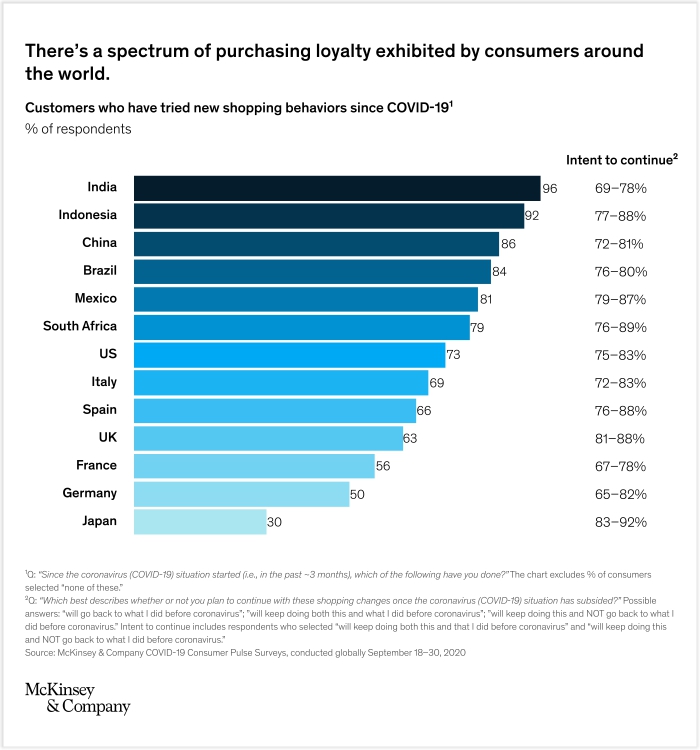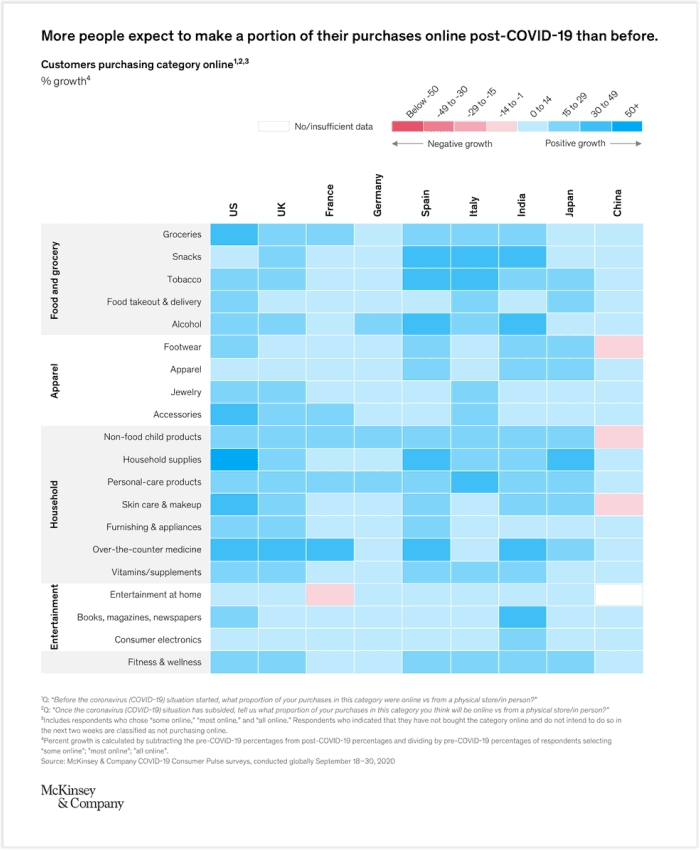The behavior of your existing customers has evolved significantly, especially in recent months.
New customers you’ve acquired might have preferences and expectations different from those you’ve catered to previously.
Now, more than ever, as we have moved on from the pandemic, every audience segment is navigating through unprecedented stress.
Consequently, they hold brands and retailers to elevated standards. These heightened expectations have notably influenced their shopping behaviors.
Utilizing a customer engagement platform can help you gauge these shifts. If your data approach isn’t robust, these transformative patterns might go unnoticed.
Leveraging customer engagement software allows you to delve deeper into how these behaviors are evolving and gauge the effectiveness of your responses to these shifts. Before diving into data analysis and generating reports, consider the potential adjustments needed in your data collection and usage methodologies due to these changing circumstances.
Outlined below are five pivotal ways the pandemic has altered customer behavior and insights on refining your strategy with the help of customer engagement solutions.
What are the major changes in customer behavior?
The coronavirus pandemic and lockdown has done something in a period of few weeks that no amount of advertising and marketing could do in years.
A baby boomer now buys her medicines online and an Indian housewife purchases vegetables online instead of handpicking them from a local vendor.
We cannot claim whether these changes are permanent, but marketers cannot afford to ignore them or just wait and watch before redesigning their marketing strategies.
According to McKinsey’s consumer sentiment survey, consumers across the globe have responded to the corona crisis and its associated disruption to normal consumer behaviors by trying different shopping behaviors. They also express a high intent (65 percent or more) to incorporate these behaviors going forward.
Engaging with customers worldwide via our customer engagement software, coupled with our own market research, we’ve discerned certain trends. These changes in customer engagement and behavior seem consistent across diverse regions and business sectors.

Source: McKinsey’s consumer sentiment survey
Throughout the year, we had been talking to our clients and marketing leaders across the world. From all the conversations and our own market studies, we observed that the following changes are visible throughout the world and business verticals.
1. The Shift to E-commerce & E-Services
Unable to go out of the house during the lockdown months, many customers across the globe shifted to digital purchases and transactions. Many customer cohorts made their first-ever digital purchase during this period.
Businesses leveraging a customer engagement platform dealing with online delivery of essentials and household items saw growth as high as 30% in a matter of months. People are not just increasingly shopping goods online, they are availing online services also.
Customers were already active in adopting e-services for banking, travel, and entertainment in the past years. Many other sectors like medical consultation, on-demand professional services, learning, etc. that lagged behind caught up quite fast during the lockdown.
Teladoc Health, the multinational for-profit virtual healthcare company, advanced its revenues 41% to $180.8 million in Q1 itself. Here in India, the rise of telemedicine has been spectacular.
Other services like e-learning and online fitness have grown tremendously. Schools have conducted online classes for almost the whole academic year.
In brief, people aren’t hesitant or apprehensive anymore, about going digital for all their requirements.
Related Read: Netcore’s ‘Expert’s View’ Blog Series

Source: McKinsey’s consumer sentiment survey
Since e-commerce is more efficient, less expensive, and safer than shopping in physical stores, this shift is likely to stay. Many people who are still paranoid to step out, would continue shopping from their couches. McKinsey’s consumer sentiment surveys mentions that customers throughout the world intend to increase their share of online shopping across most categories.
What does it mean for marketers?
A. More focus on e-commerce and digital channels. One European retailer built a functioning e-commerce platform in 13 weeks. Businesses new to the digital arena must prioritize enhancing their online shopping experiences, which includes refining their website and app, incorporating flexible payment methods, and optimizing logistics and customer engagement solutions.
And old timers need to double down on everything they have been doing to deal with the surge in competition. Marketers need to plan segment-specific strategies to engage and retain new customer cohorts.
B. Customers’ growing confidence in e-services promises a steady rise in demand and a great opportunity to create new connections with people. Marketers must capitalize on developing public and private partner ecosystems to leverage the growth potential.
For example, a grocery-selling platform can partner with an online fitness brand to cross-promote healthier food options to a wider audience. Or a telemedicine platform can collaborate with an online pharmacy for better reach.
C. Reimagining customer engagement and analytics is also paramount. Customers might have come aboard during distress and emergency, but to get continued business from them, marketers need to build lasting relationships.
Marketers need to equip themselves better to manage the new wave of data and use it for better personalized conversations with their customers. New customer personas are getting added every day, and there are rapid shifts happening in the older ones.
Without a super-powerful analytics engine, and customer engagement software, deciphering behavioral trends and offering tailored experiences becomes challenging.
2. Choosing Local Over Global
Months of lockdown and travel constraints made local neighborhood businesses popular and important. Community social media pages, and many private and government forums connected people to such groups of businesses.
More and more customers are consciously moving to using local goods and services. “Shop local” is more than a slogan, it is an emotion now.
A global survey from Ernst & Young found 34 percent customers indicate that they would pay more for local products.
What does it mean for marketers?
For brands aiming to strengthen their customer engagement, localizing marketing endeavors proves beneficial.
Tailoring the messages to suit different neighborhoods and delivering them using the community networks and existing channels can go a long way in boosting the brand image. However, such hyper-local engagement requires granular level presence and marketers need to recalibrate their operating models to achieve this. Giants like Amazon, Cadbury and Titan have been running special emotion-loaded campaigns to promote local businesses.
The post-COVID customers are grateful for the neighborhood and local businesses that helped them during the pandemic. Brands that recognize this inclination towards local, and show solidarity and support to the community, can secure their places in the hearts of their users.
3. Brand Loyalty Takes a Backseat
Many factors like shortage of products, supply chain disruptions, increased number of ecommerce options, safety concerns in visiting physical stores, and tight financial situations have led to customers’ shift in brand loyalty.
McKinsey found that 78% of U.S. consumers and 94% of Indian customers have switched stores, brands, or the way they shop due to the pandemic. And it certainly is a challenge to get those customers back, especially for established and older brands who have lost customers to newer and smaller brands.
What does it mean for marketers?
Customers’ brand loyalty depends on many factors like product quality, customer service, and price competitiveness, and last but not the least – connection with the brand. At this point in time, whether the customers stick with a brand or move on, depends on how do they ‘feel’ about the brand.
So, the brand communication strategy is all the more crucial today. While brands must ensure personalized communication, the customer engagement solutions they choose should transcend that. Establishing and reinforcing a brand reputation that it actually cares about the customers, community, and society is what smart marketers are already doing. It will not only impact the way they will get through the pandemic but also for the time after all of this is over.
4. Change in Spending Power and Priorities
Customers’ spending power, priorities, and intent has changed drastically. Owing to the loss of jobs, struggling businesses, concern for health and safety, and shortage of goods and services, people are prioritizing essentials over luxury and discretionary categories.
For instance, travelling and holidaying is still at the backburner of many people’s plans. It is difficult to say if this shift in customer sentiment will remain for long, but looking at the economic trauma the world has sustained and the virus risk still looming over, 2021 is uncertain. Sectors like real estate, hospitality, automobile, aviation are reeling under the losses incurred due to the shutdown.
What does it mean for marketers?
Maintaining customer engagement is vital, ensuring ongoing dialogue. Sooner or later, things will normalize and when they do, brands ought to be at the top of the mind of their customers.
During the lockdown, even though businesses were not operational, many brands stayed in touch with their users through non-promotional campaigns – like sharing health tips, relevant COVID information, and general content to imply they are with their customers.
Marketers need to show through their messaging that they care about the customers beyond business. They must keep their website and app updated, and keep conversing with the customers across the communication channels.
A New Marketing Playbook For the Next Normal
Although the trends aren’t very steady and the coming quarters still seem unpredictable, marketers have enough information in hand to design a playbook for themselves for the new normal. After all, things aren’t going back to how they were before the pandemic.
Driven by answers to the following questions, marketers can design their playbook to succeed in the COVID-altered world:
- How can the brand’s strategy and philosophy keep up with the evolving customer trends?
- How well does the brand know and understand each of its customers?
- What technological tools, perhaps a customer engagement platform or customer engagement software, are essential to process customer data, extract insights, and implement real-time actions?
- How can a tailored customer engagement solution be woven into the company’s operations?
- How can each department in the organization work with agility to adapt to the changing customer needs?
- The key is to remain watchful of the changes happening in the market, be flexible and agile to adapt to them. As they say, there is opportunity is every adversity.
Ultimately, vigilance and adaptability are paramount. As the saying goes, within every challenge lies opportunity.
Equip yourself with cutting-edge customer engagement solutions. Book a demo with Netcore today and discover how we can enhance your brand’s adaptability in this rapidly changing landscape.








